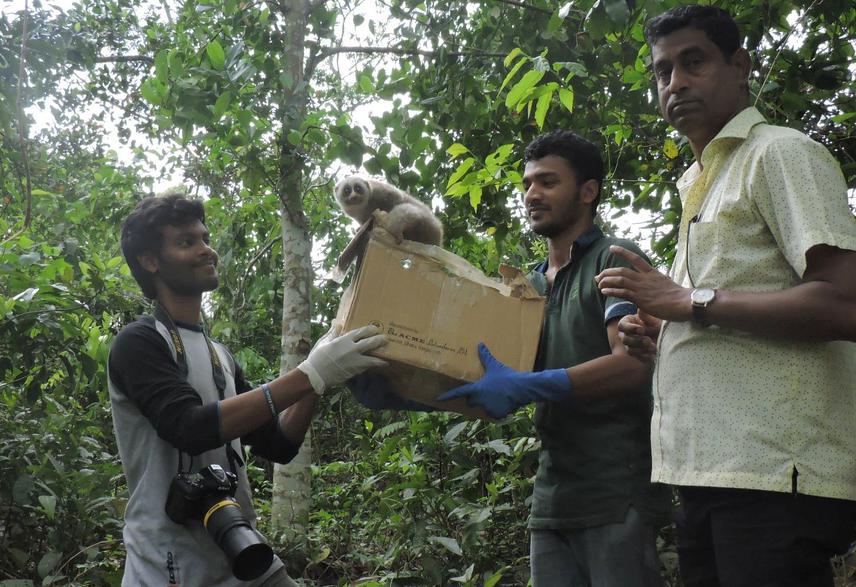Hassan Al-Razi
Bengal Slow Loris is a nocturnal, secretive, and poorly-studied primate of south and south-east Asia. It has been categorized as Vulnerable (IUCN 2008) and listed as Schedule I in the Bangladesh Wildlife (Preservation) (Amendment) Act, 2012. Because of its nocturnal behaviour, no in-depth systematic study have been done on this species in Bangladesh and very little is known about its population size, population trends, ecology and threats. Without this baseline information, conservation and management plans would be very difficult to formulate. The object of this project is to know these unknowns to help in the conservation of this vulnerable species.

Releasing Bengal Slow Loris in SNP in presence of Ranger and Beat Officer.
Bengal Slow Loris is a nocturnal, secretive and poorly-studied prosimian primate distributed in south and south-east Asia. Very little is known about its population size, population trends and ecology probably due to their nocturnal habit, cryptic nature and comparatively small body size. Unfortunately the primate is highly threatened by habitat loss, pet trading and using as traditional medicine. It is considered globally ‘Vulnerable’ and has been recently transfer from Appendix II to Appendix I of CITES.
No in-depth systematic study have been done on this species in Bangladesh where several protected areas are known to support it at least at low numbers. Actual surveys rather than few known anecdotal reports are necessary to determine the true abundance of this species in the wild. Without the baseline data, proper conservation and management plans is very difficult to formulate.
The main objective of the study is to survey the Bengal Slow Loris in 5 north-eastern forests of Bangladesh to assess their:
(1) population status
(2) remnant habitat condition
(3) threats affecting their population.
During ‘Spotlight’ searches using eye-shine technique in randomly selected transects, the project will implement ‘recce’ method beside ‘distance sampling’ to estimate the population density. Habitat will be assessed through ‘quadrate sampling’ in 20-30 randomly selected 50m X 50m plots in each sites. The project will also catalogue human impacts on Loris habitats, long term threats and local people’s attitude towards conserving the species. Interviews will be open-ended to gather information on varied issues such as occurrence, hunting and uses of Loris among local communities. Based on the findings of the project, an awareness program will be arranged for local communities and forest staffs in each sites. Posters and leaflets containing message on saving Loris will be distributed among school going children and local people. The projects will ensure reporting the findings to wildlife managers and policy makers to take proper measures to conserve this species.
The project will be successful if it can successfully
(1) survey and assess the population, habitats and threats at least in 5 sites
(2) aware local people towards conserving the Loris
(3) report to wildlife managers and policy makers.